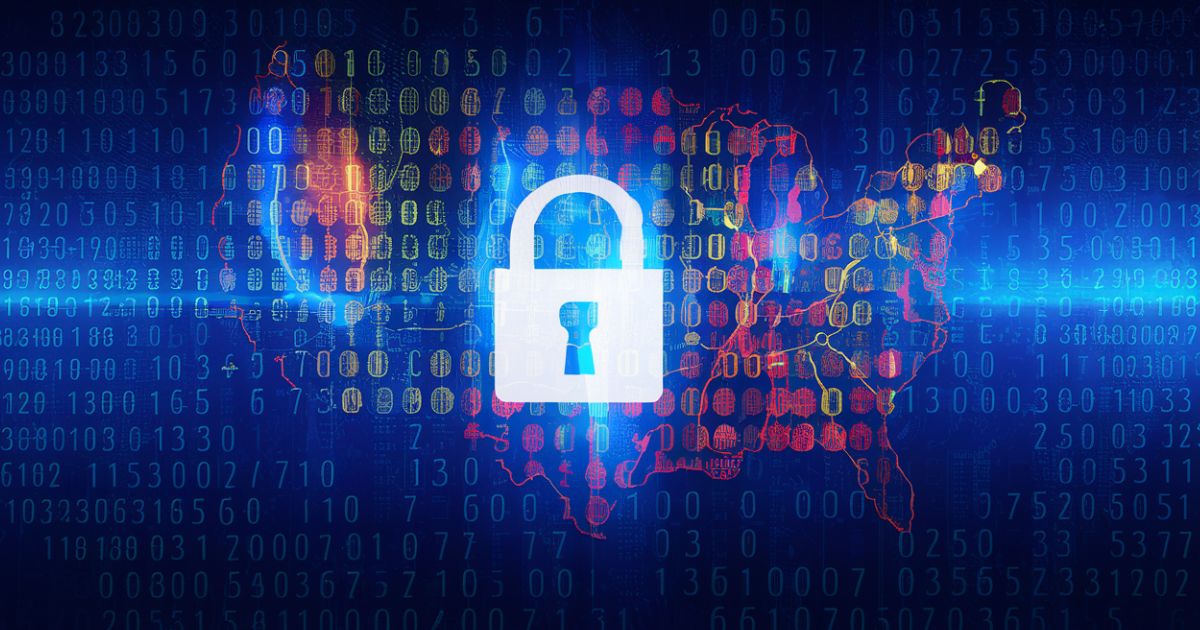In the digital wild west of 2024, a new sheriff in town – and it’s not the good guy. The Webcord Virus has emerged as a formidable threat in the cybersecurity landscape, leaving many Americans scrambling for protection.
This comprehensive guide will equip you with the knowledge and tools to safeguard your digital life against this insidious malware.
Introduction to WebCord Virus
The Webcord Virus first reared its ugly head in late 2023, quickly becoming a thorn in the side of cybersecurity experts across the USA. This stealthy piece of malicious software has been dubbed “the chameleon of cyber threats” due to its ability to adapt and evade detection. Webcord is a universal menace, targeting both small businesses and large corporations alike, unlike its predecessors.
What sets Webcord apart is its sophisticated infection vectors. It doesn’t just rely on the usual suspects like phishing emails or malicious downloads. This virus has been known to exploit zero-day vulnerabilities in popular software, leaving even the most cautious users at risk.
The Webcord Virus, also known as SSIS-950 in some cybersecurity circles, is a particularly nasty strain of malware that’s been making waves in 2024. This digital menace is known for its ability to evade traditional antivirus software, often hiding in plain sight within a system’s core files. SSIS-950’s hallmark is its rapid spread through networks, making it a significant threat to both individual users and large organizations alike.
How Does WebCord Virus Work?
Understanding the mechanics of the Webcord Virus is crucial in developing effective defense strategies. At its core, this malware operates like a digital parasite, latching onto your system and siphoning resources while remaining undetected.
The virus typically gains entry through cleverly disguised phishing emails or by piggybacking on seemingly legitimate downloads. Once inside, it employs a suite of stealth techniques to avoid detection by traditional antivirus software.
One of Webcord’s most insidious features is its ability to modify system files, effectively camouflaging itself within your device’s operating system. It creates backdoors, allowing cybercriminals to access your system at will. One infected device can be used to launch a full-scale network invasion by exploiting network vulnerabilities.
Symptoms of Infection of WebCord Virus
Your device might start acting like it’s had one too many energy drinks – sluggish performance, unexpected crashes, and weird pop-ups are all on the menu. You might notice your fan working overtime or your battery draining faster than a leaky bucket.
On the privacy front, things can get downright creepy. Unexplained account activity, mysterious emails sent from your address, or your webcam light flickering on by itself? That’s Webcord waving a big red flag at you.
Visible Signs on an Infected Device
Detecting a Webcord infection early can be the difference between a minor inconvenience and a major catastrophe. Keep an eye out for these telltale signs:
- Unexpected pop-ups or browser redirects to suspicious websites
- New desktop icons appearing out of nowhere
- Files with strange names or extensions you don’t recognize
- System tools like Task Manager or Registry Editor becoming inaccessible
Performance Impact on the Device or Network
Webcord doesn’t just compromise your security – it can bring your digital life to a crawl. Watch for these performance red flags:
- Significantly slower system response times
- Programs taking ages to load or frequently crashing
- Unexpected blue screens or system freezes
- Unusually high network activity, even when you’re not actively using the internet
Security and Privacy Implications for the User
The real danger of Webcord lies in its potential to compromise your personal information and privacy. Be on high alert if you notice:
- Unexplained changes to your account passwords
- Unauthorized financial transactions or strange credit card charges
- Emails or messages sent from your accounts that you don’t remember sending
- Your webcam light turning on without your input
What does the WebCord Virus do?
The Webcord Virus isn’t just a digital nuisance – it’s a full-blown cybersecurity nightmare. This malicious software wears many hats, each more sinister than the last.
Short-term and Long-term Effects on Devices
The impact of a Webcord infection can be both immediate and long-lasting. In the short term, you might experience system slowdowns, frequent crashes, and the frustration of dealing with constant pop-ups or redirects. The long-term effects can be far more severe.
Webcord can degrade your hardware over time, shortening the lifespan of your devices. It may also create permanent backdoors in your system, leaving you vulnerable to future attacks even after you think you’ve removed the virus.
Potential Dangers to Personal Data and Privacy
Webcord’s appetite for data is voracious. It can harvest everything from your browsing history to your saved passwords. In more advanced cases, it might even activate your device’s camera and microphone, turning your trusted technology into a spy in your own home. The virus also has ransomware capabilities, potentially encrypting your personal files and holding them hostage until a ransom is paid.
Economic Impact on Businesses and Individuals
The financial toll of a Webcord infection can be staggering. For businesses, it can lead to lost productivity, data breaches resulting in hefty fines, and severe reputational damage. Individuals might face direct financial losses through unauthorized transactions or the costs associated with identity theft. In 2023 alone, it’s estimated that Webcord and similar viruses cost the US economy over $10 billion.
Prevention and Safety Measures from Webcord Virus

Stay one step ahead of Webcord by practicing digital hygiene: update regularly, browse cautiously, and trust your gut when something seems fishy.
Your best defense is a good offense: arm yourself with top-notch antivirus software, a well-configured firewall, and a healthy dose of skepticism online.
Best Practices to Avoid Infection
Preventing a Webcord infection is far easier than curing one. Here are some crucial best practices:
- Email Vigilance: Always scrutinize emails, especially those with attachments or links. If something looks fishy, it probably is.
- Safe Browsing: Stick to reputable websites and avoid clicking on pop-ups or ads, no matter how enticing they might seem.
- Download Discretion: Only download software from official sources. Those “free” versions of premium software often come with a hidden cost.
- Regular Backups: Keep your important data backed up on an external hard drive or a secure cloud storage service.
Security Software and Settings to Enhance Defense
Your device’s built-in security features are your first line of defense against Webcord. Here’s how to fortify them:
- Antivirus Solutions: Invest in a reputable antivirus program with real-time scanning capabilities. Some top contenders for 2024 include Norton 360, Bitdefender, and Kaspersky.
- Firewall Configuration: Ensure your firewall is active and properly configured. It’s like a bouncer for your device, keeping the riffraff out.
- Browser Security: Enable security features in your browser settings, such as pop-up blockers and safe browsing modes.
Updates and Patches Importance
One of the simplest yet effective ways to protect against Webcord is to keep your software up-to-date. Cybercriminals often exploit known vulnerabilities that have already been patched in newer versions. Set your operating system and critical software to update automatically, and make it a habit to check for updates regularly.
Steps to take if you suspect you have been infected by the Webcord Virus
If you suspect a Webcord infection, time is of the essence. Here’s what to do:
- Disconnect from the internet immediately to prevent further data loss or spread.
- Run a full system scan with your antivirus software.
- If you’re part of an organization, alert your IT department or cybersecurity team.
- Change all your passwords from a clean device.
- Monitor your financial accounts for any suspicious activity.
Removal and Recovery Guide of Webcord Virus By Techfocuspro
Techfocuspro’s expert removal and recovery guide offers a lifeline for those battling the Webcord Virus. With step-by-step instructions and professional insights, it’s your go-to resource for reclaiming your digital life from this persistent threat.
Step-by-Step Guide on Removing the WebCord Virus
- Boot your computer in Safe Mode with Networking.
- Update your antivirus software and run a full system scan.
- Use specialized anti-malware tools to detect and remove any remnants of the virus.
- Check your system files and registry for any suspicious entries.
- Remove any unfamiliar browser extensions or add-ons.
Recovery of Files and System Post-Infection
Once you’ve removed the virus, it’s time to restore your system to its pre-infection state:
- Restore your files from a clean backup.
- Run system file checker (sfc /scannow) to repair any corrupted system files.
- Update all your software and operating system to the latest versions.
- Consider a clean install of your operating system if the infection was severe.
When to Seek Professional Help?
If you’ve followed the steps above and are still experiencing issues, it might be time to call in the pros. Signs that you need professional help include:
- Persistent system issues even after attempted removal
- Inability to access critical files or system functions
- Suspicion of data theft or privacy breaches
Professional intervention, while potentially costly, can save you time and ensure a more thorough cleanup of your system.
Long-term protection against the Webcord Virus

Protecting against Webcord isn’t a one-time task – it’s an ongoing process. Here are some strategies for long-term protection:
- Educate Yourself: Stay informed about the latest cybersecurity threats and best practices.
- Regular Security Audits: Periodically review your security measures and update them as needed.
- Multi-Factor Authentication: Implement this wherever possible to add an extra layer of security.
- Network Segmentation: If you’re running a business, consider segmenting your network to limit the spread of potential infections.
Conclusion
The Webcord Virus represents a significant threat in our increasingly digital world, but with the right knowledge and tools, you can protect yourself and your data. Stay vigilant, keep your systems updated, and don’t hesitate to seek help when needed.
By following the guidelines in this expert guide, you’re not just protecting yourself from Webcord – you’re building a robust defense against a wide range of cyber threats. Stay safe out there, digital warriors!

Jordan Lee, a tech enthusiast and the founder of Innovate Tech Solutions, brings a wealth of knowledge to the tech industry. With a strong background in software development and digital marketing, Jordan crafts solutions that drive innovation. His passion for technology fuels his commitment to helping businesses thrive in the digital landscape.
